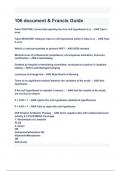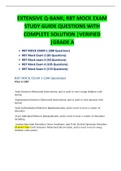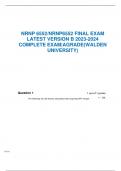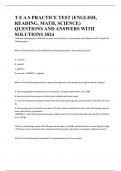Case
(answered) Assessment & Reasoning GI System Peggy Scott, 48 years old (latest complete solution)
- Course
- ADN 213 (ADN213)
- Institution
- Broome Community College
Assessment & Reasoning GI System Peggy Scott, 48 years old Suggested GI/GU Nursing Assessment Skills to Be Demonstrated: GI/GU: Inspection: skin (coloration, vascularity, striae, scars, lesions, rashes) • Contour from 2 angles – (flat, rounded, scaphoid, protuberant/distended) •...
[Show more]












